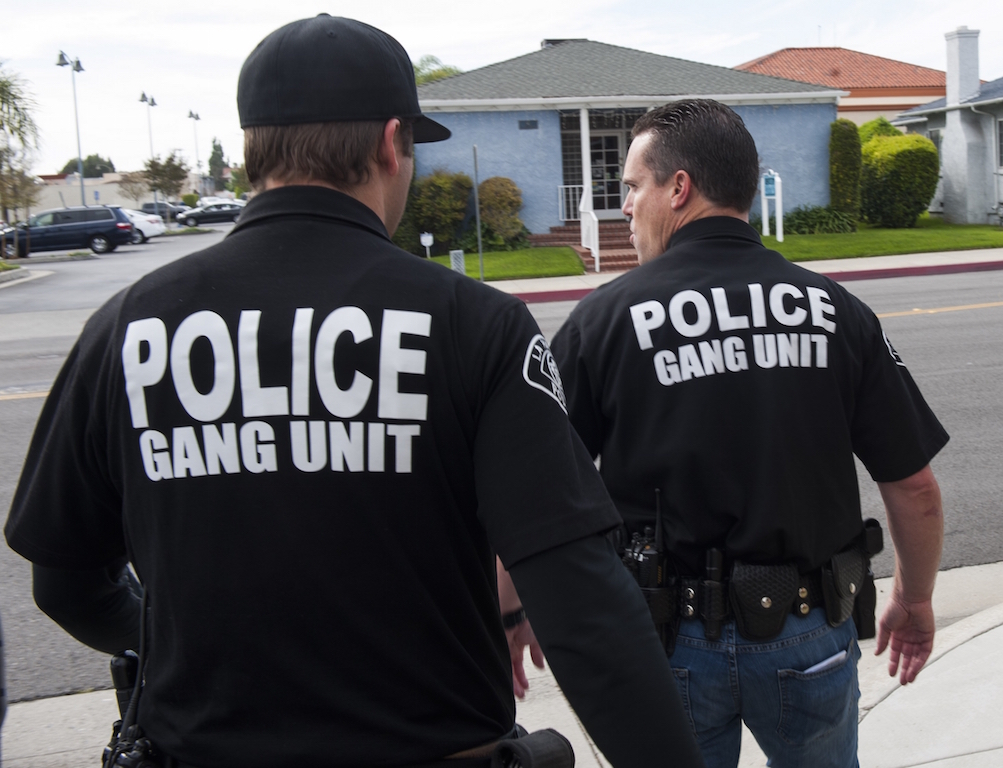It can send a message or, in some cases, it can be a warning.
Graffiti can be a sign of a young teen flirting with the idea of submitting to gang life, or it can be the calling card of an established crew.
Whatever the story behind hastily sprayed letters on a brick wall or a large mural, La Habra is not having it.
“Graffiti means something in the criminal street gang world,” said LHPD Det. Daniels. “It tells a story. It’s the newspaper of the streets.
“It is an eyesore and it is blight, but it can also cause problems, so getting it removed is our two-fold goal.”
The police department and city partner to run a multi-layered graffiti program that combines enforcement, removal and restitution and hold taggers accountable, which includes requiring those arrested on graffiti charges to pay for the employee time spent and materials used to cover the vandalism.
The effort starts with tracking and cleaning.
La Habra’s Ernesto Oros starts his day long before many in the city wake.
At 4 a.m., he visits places known to be trouble areas for graffiti, including city parks and near the railroad tracks, and also follows up on graffiti sightings reported by residents or police.
He covers the marks with paint, sometimes getting some help from local youth and teens who were sentenced to graffiti cleanup as part of La Habra’s youth diversion program.
The diversion program gives juveniles who have committed minor crimes the option to do community service and set their lives on the right path again.
“The city’s graffiti removal program has been very successful,” said Josie Anderson, social services manager. “Through ongoing outreach, the city emphasizes the important of a graffiti-free community and supports a zero tolerance approach.”
While improving the city’s aesthetics and mentoring troubled youth are measurable impacts of the graffiti program, it also plays a role in keeping the city safe.

Gang detectives Daniels and Razey patrol city streets every weekend looking for suspicious gang activity. Photo by Miguel Vasconcellos/Behind the Badge OC
Gang unit detectives Razey and Daniels run the law enforcement side of the program, which includes monitoring different groups and individuals responsible for marking up sprayable surfaces across the city.
Keeping detailed records of documented gang members involved in graffiti activity can, in some cases, help police seek stiffer penalties for crimes that might otherwise be categorized as misdemeanors, Daniels said.
Police rely on a state penal code that allows for enhancements to be tacked on to criminal charges for known gang members.
In one recent case, the gang unit detectives caught a documented gang member vandalizing city property and a $200 misdemeanor vandalism charge was upgraded to a felony.
That gang member was sentenced to five years in prison.
“It’s one of the most strongly worded laws we have on the books,” said Det. Daniels. “It has a lot of teeth, which is necessary in these cases. Without an enhancement, they’re doing minimal time and then are just back out again.”
That gang member, along with anyone else arrested on graffiti charges, also was required to pay for the cost of materials and time spent covering the vandalism.
The detectives also monitor graffiti to gain insight into La Habra’s gang activity.
The detectives know if they see tagging from one gang on a rival’s turf, it might be a sign of criminal activity on the horizon.
“Gangs use it to document their movements around the city, but it can also be a sign of things to come,” Daniels said. “It can let us know that another gang may be targeted.”
Added Razey: “It can mean nothing and it can mean everything. That’s why we get it down as quickly as possible.”
 Behind the Badge
Behind the Badge



